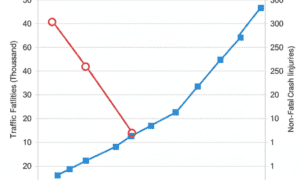Freight train containers have grown in popularity and global commerce has made it necessary in order to efficiently transport goods. These containers have brought significant changes to cargo logistics, tackling issues like traffic congestion, air pollution, and the costs associated with transporting goods via train. Here, we will examine the upsurge of freight containers for rail cargo and delve into their potential to provide an answer to the different struggles experienced in freight delivery today.
Reducing congestion
Efficient use of rail networks
Freight trains are so useful because the latest rail network is made up of these freight train containers. Compared to other transport possibilities that commonly involve multiple stages of taking in and out, these containers allow an unbroken transition from ships to trains and even trucks. This reduces the amount of time and space necessary for transshipment processes, significantly decreasing the number of traffic hold-ups at docks and transportation centers.
Decongesting roads
Urbanization is a quickly increasing phenomenon, which has led to the pressing issue of urban overcrowding. To ease traffic flow in highly-populated cities, freight train containers are offering a viable resolution. As compared to more typical transportation modes, rail can bring many advantages, such as cutting down on traffic jams, shortening commutes, and improving air quality – all of which will have an overall positive impact on the lives of citizens in these places.
Mitigating Pollution
Lower carbon emissions
In the 21st century, the rapid changes in climate, mainly because of greenhouse gas emissions, are one of the critical concerns. An efficient way to counter this problem is to transport products by freight trains, as it is an ecologically friendly way of moving goods. Trains are far more fuel-efficient than trucks, and when powered using cleaner sources of energy, such as electrification, they can drastically lessen the amount of carbon emissions generated by freight transport.
Noise pollution reduction
Freight trucks are known to cause noise pollution in urban areas; however, freight trains offer a more unblemished alternative due to the fact that they are usually powered by electricity and are much quieter. The use of freight transport by transferring from trucks to trains can create a good environment in urban areas, and it can also reduce noise pollution.
Decreased air pollution
A famous and familiar source of cargo shipping is diesel trucks, but it can be a source of very dangerous nitrogen pollutants and particulate matter. These pollutants can have toxic effects on the health of people and can also be a source of smog. Air pollution can be declined by transferring to rail transportation, and it will also have positive effects on the health of people.
Reducing costs with freight train containers
Economies of scale
The use of freight train containers makes it possible to transport large amounts of cargo in a single journey. As shipping quantity rises, the cost per item declines, thus creating economies of scale. This, in turn, drives down transportation costs and makes goods more accessible and inexpensive for buyers and commercial entities alike.
Reduced maintenance costs
Usually, trucks are used for traveling long distances, which leads to severe damage, while on the other hand, freight trains are more regulated and well-equipped, so they are less likely to get any damage. Therefore, in the end, the expenses of freight trains are less. For companies that are looking to increase their supply chain with the least cost, rail transportation is an ideal option.
Lower fuel costs
Rail transport uses less fuel as compared to fuel used by road transport. The freight can be moved far away with the least amount of fuel as compared to fuel used by trucks weighing the same amount. This advantage is cost-favorable for both organizations and consumers, especially when fuel prices are high.
Overcoming challenges with freight train containers
Despite the many benefits of freight train containers, there is still a need to check out the disadvantages of containers to get maximum advantage from them.
Infrastructure investment
It is crucial that governments and private entities invest in railway infrastructure to be able to handle the increasing volume of containerized freight. Expanding and modernizing this system will make it possible for more trains to be accommodated.
Intermodal connectivity
Effective intermodal links between ships, trains, and trucks are essential for the success of containerized freight transport. To make this goal achievable, investments must be made in intermodal terminals and efficient logistics systems.
Environmental impact
Transferring to rail transport with freight train containers is not necessarily beneficial for the atmosphere, simply by the switch from fossil fuels. We have other factors to consider like the energy source the rail is operated by, the material from which the containers are constructed and the infrastructural investment that many times is required. By taking all factors in consideration and then comparing the upside to the downside, we then surly can say that rail transport is an advantageous option for the environment.
Conclusion
In order to capitalize on the great potential of freight train containers, it is essential that we invest in infrastructure, link various modes of transport, and put measures into place which are beneficial for the environment. These durable containers have changed rail freight drastically, minimizing traffic congestion, emissions and costs. Through an improved and more sustainable global trading system, these solutions can be realized
Tagtransport.se is a great source of knowledge and study for the people who are seeking more knowledge about rail freight and the effect of freight containers on its development. We can together make a bright future by using these advancements, less expensive, and less congested cargo transportation.





























